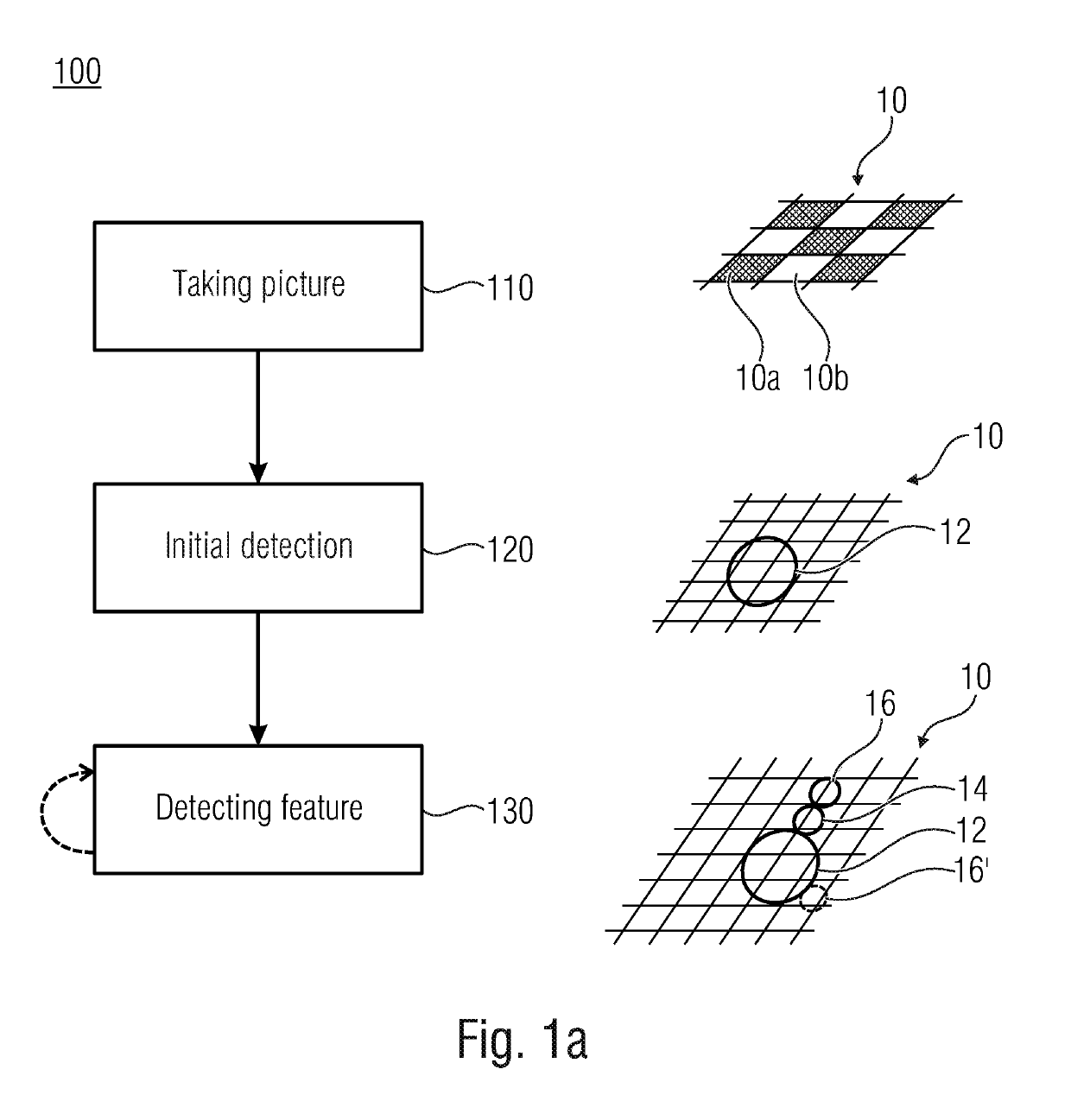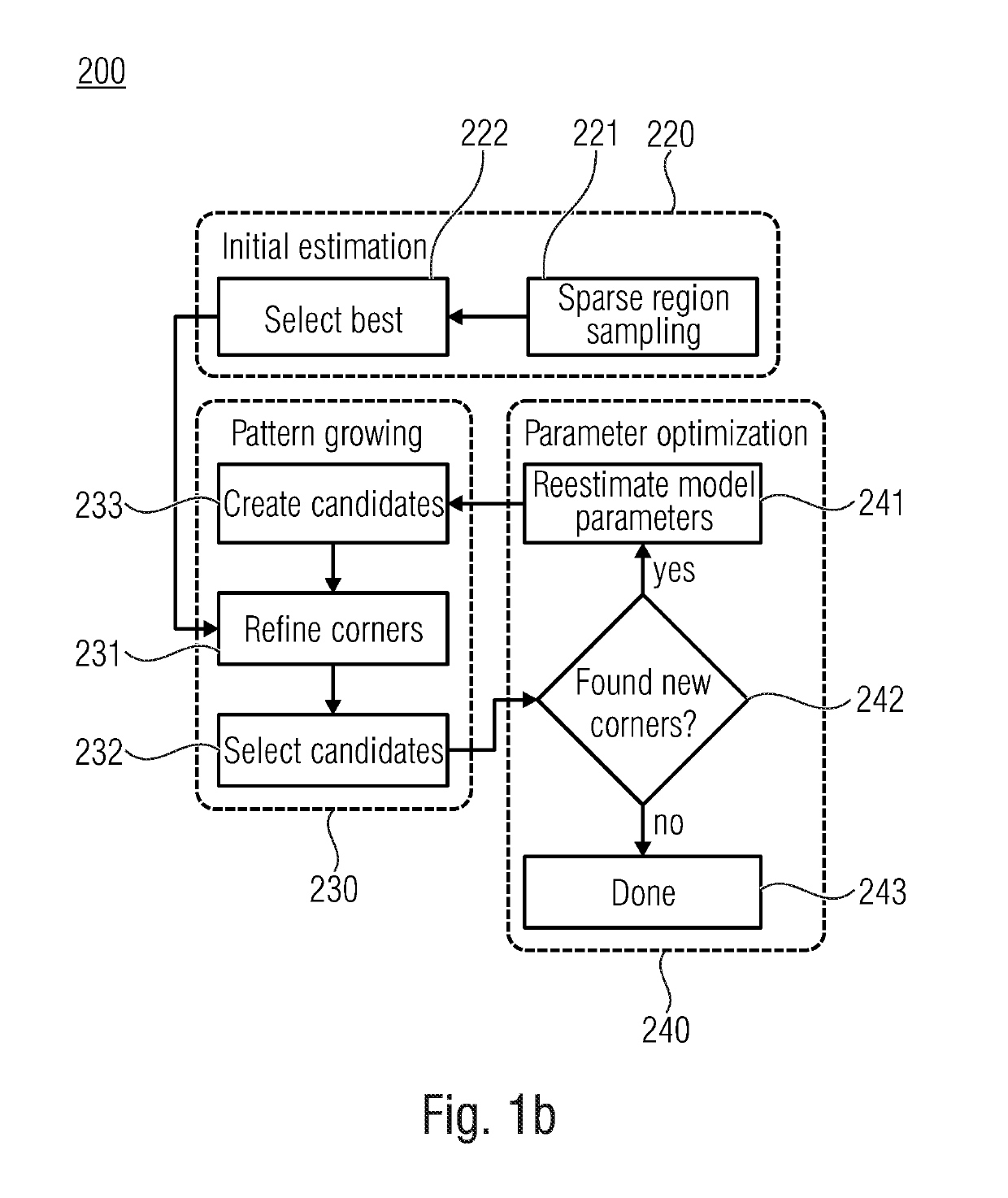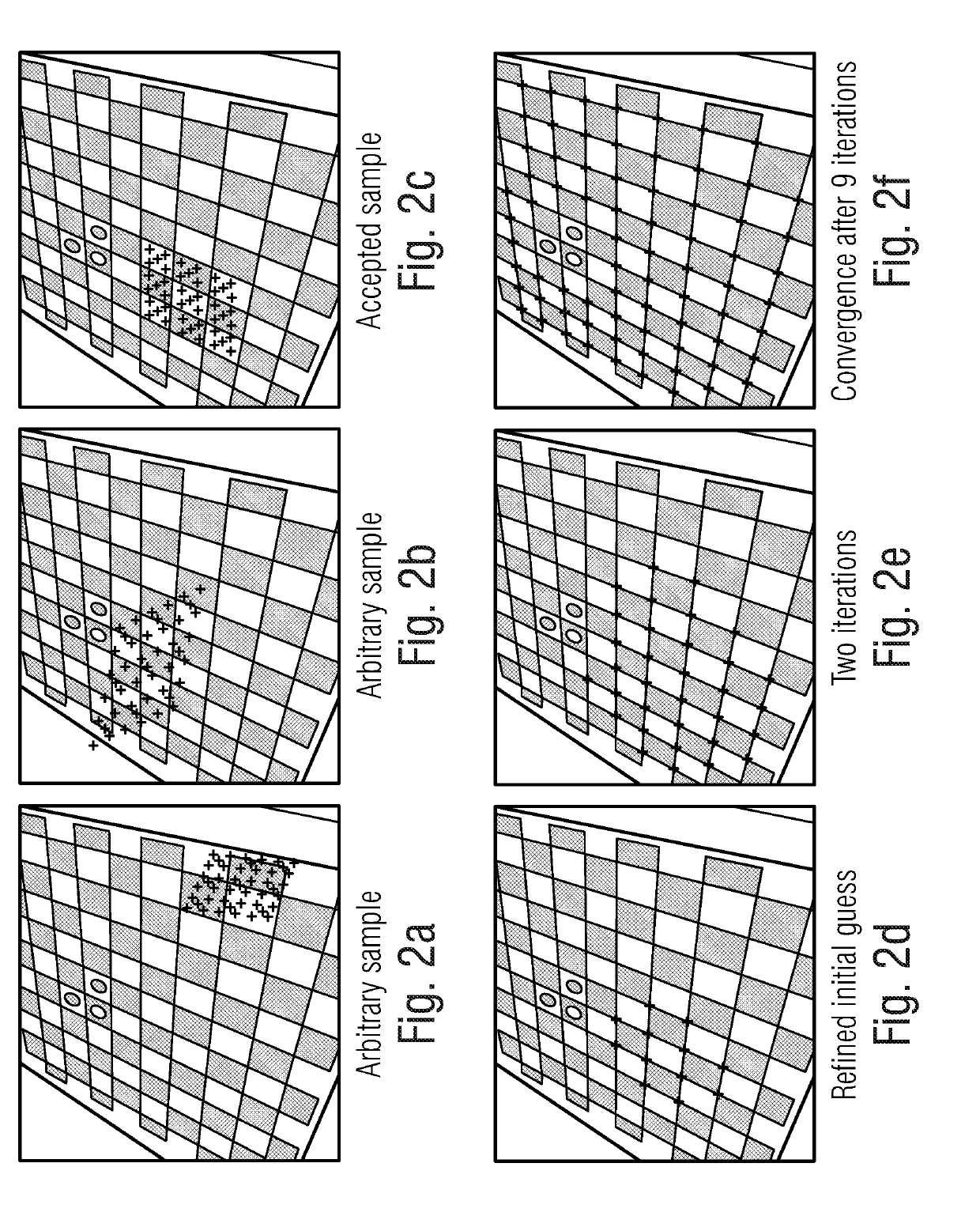Pattern detection
a pattern detection and pattern technology, applied in image analysis, image enhancement, instruments, etc., can solve the problems of glare, vignetting effect, and very strong distortion effect of endoscopic applications, and achieve the effect of reducing the number of pixels
- Summary
- Abstract
- Description
- Claims
- Application Information
AI Technical Summary
Benefits of technology
Problems solved by technology
Method used
Image
Examples
Embodiment Construction
[0050]Below, embodiments of the present invention will subsequently be discussed referring to the figures. Here, identical reference numbers are provided to elements or steps having identical or similar functions. Therefore, the description thereof is interchangeable and mutually applicable.
[0051]FIG. 1a shows the basic method 100 for detecting a known pattern 10 having homogeneous areas 10a and 10b. The known pattern 10 may be, for example, a chessboard or another regular or irregular pattern e.g. comprising circles or having QRcode arrangement. Typically, but unnecessarily, the areas 10a and 10b are black and white, such that the same offer a high contrast. However, according to further embodiments, the homogeneous areas may have a different color. The method 100 comprises the three basic steps 110, 120 and 130.
[0052]In the first step 110, a picture of the entire pattern 10 or a portion of the pattern 10 is taken. Starting from this picture, the pattern detection is performed usin...
PUM
 Login to View More
Login to View More Abstract
Description
Claims
Application Information
 Login to View More
Login to View More - R&D
- Intellectual Property
- Life Sciences
- Materials
- Tech Scout
- Unparalleled Data Quality
- Higher Quality Content
- 60% Fewer Hallucinations
Browse by: Latest US Patents, China's latest patents, Technical Efficacy Thesaurus, Application Domain, Technology Topic, Popular Technical Reports.
© 2025 PatSnap. All rights reserved.Legal|Privacy policy|Modern Slavery Act Transparency Statement|Sitemap|About US| Contact US: help@patsnap.com



